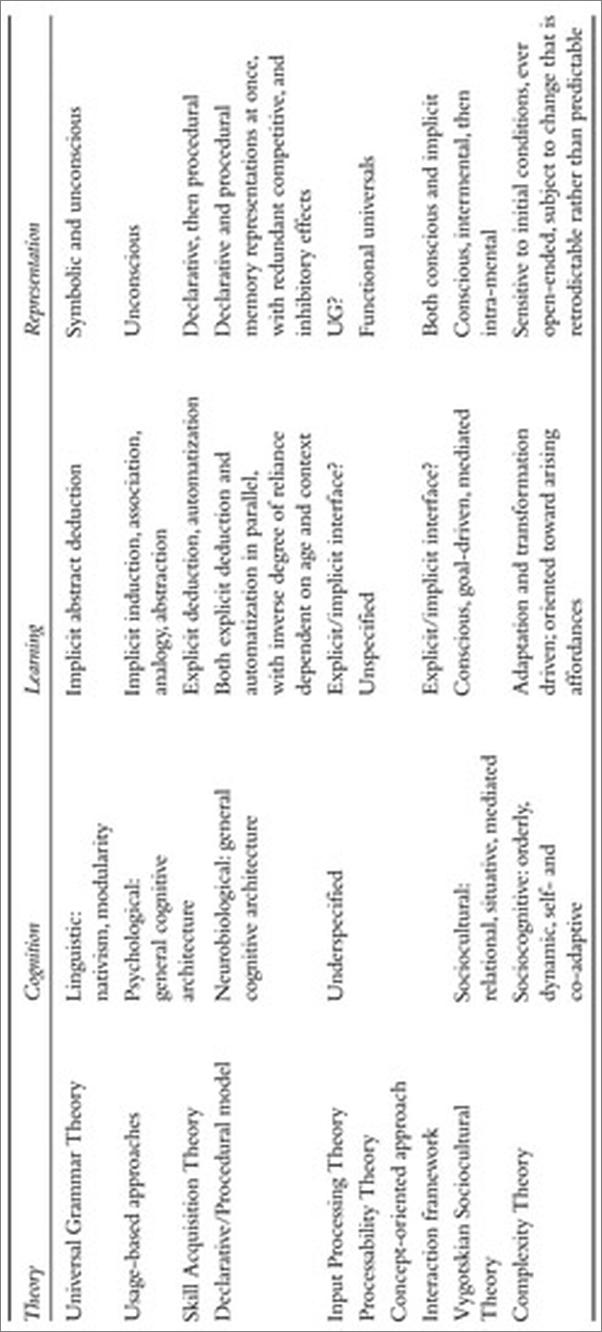TheoriesinSecondLanguageAcquisition - (EPUB全文下载)
文件大小:3.09 mb。
文件格式:epub 格式。
书籍内容:
1Introduction
The Nature of Theories
Bill VanPatten and Jessica Williams
Almost everyone has heard of Einstein’s Theory of Relativity. People have also heard of things such as the “Theory of Evolution” and “Atomic Theory.” What is common to all these theories is that they are theories about what scientists call natural phenomena: things that we observe everyday. Theories are a fundamental staple in science, and all advances in science are, in some way or another, advances in theory development. If you asked scientists, they would tell you that the sciences could not proceed without theories. And if you ask applied scientists (such as those who develop medicines or attempt to solve the problem of how to travel from Earth to Mars), they would tell you that a good deal of their work is derived from theoretical insights.
Theories are also used in the social and behavioral sciences, such as psychology, sociology, and economics. As in the natural sciences, social sciences attempt to explain observed phenomena, such as why people remember some things better than others under certain conditions or why the stock market behaves the way it does.
In the field of second language acquisition (hereinafter SLA) research, theories have also come to occupy a central position. Some researchers, though by no means all, would even say that the only way SLA can advance as a research field is if it is theory driven. The purpose of the present book is to introduce the reader to certain current theories in SLA and provide a background for continued in-depth reading of the same. As a starting point, we will need to examine the nature of theories in general.
What Is a Theory?
At its most fundamental level, a theory is a set of statements about natural phenomena that explains why these phenomena occur the way they do. In the sciences, theories are used in what Kuhn (1996) calls the job of “puzzle solving.” By this Kuhn means that scientists look at observable phenomena as puzzles or questions to be solved. Why does the earth revolve around the sun and not fly off into space? Why are humans bipedal but gorillas knuckle-walkers? These are all questions about things that confront us every day, and it is the job of scientists to account for them.
In short, then, the first duty of a theory is to account for or explain observed phenomena. But a theory ought to do more than that. A theory also ought to make predictions about what would occur under specific conditions. Let’s look at three ex ............
书籍插图:


以上为书籍内容预览,如需阅读全文内容请下载EPUB源文件,祝您阅读愉快。
书云 Open E-Library » TheoriesinSecondLanguageAcquisition - (EPUB全文下载)
